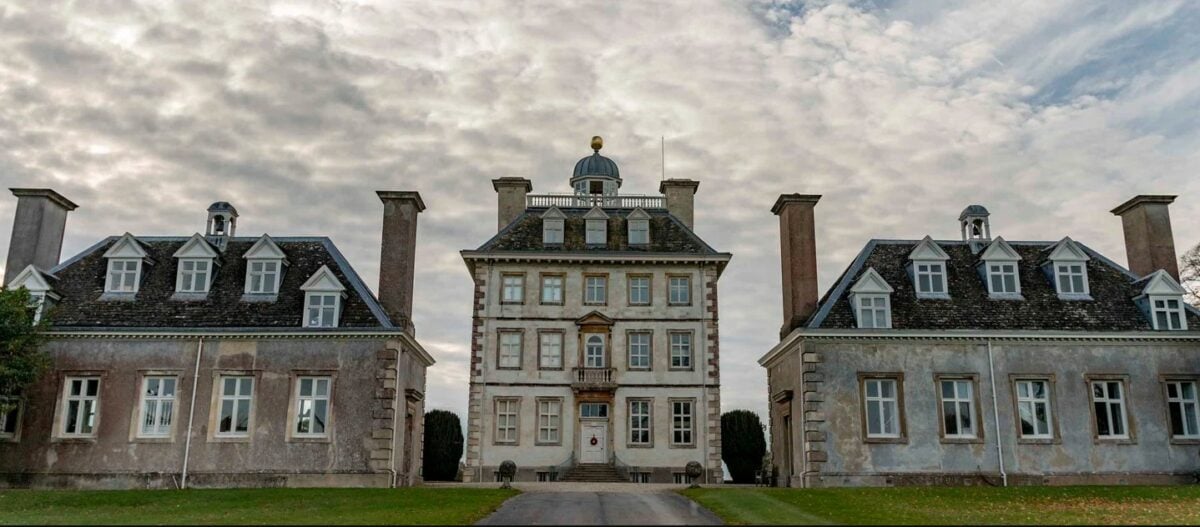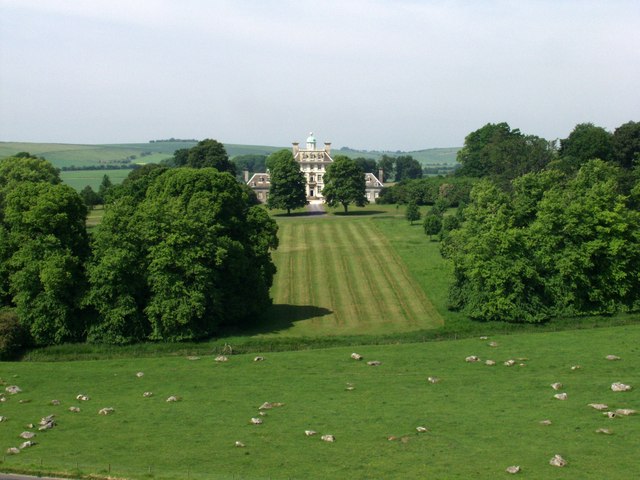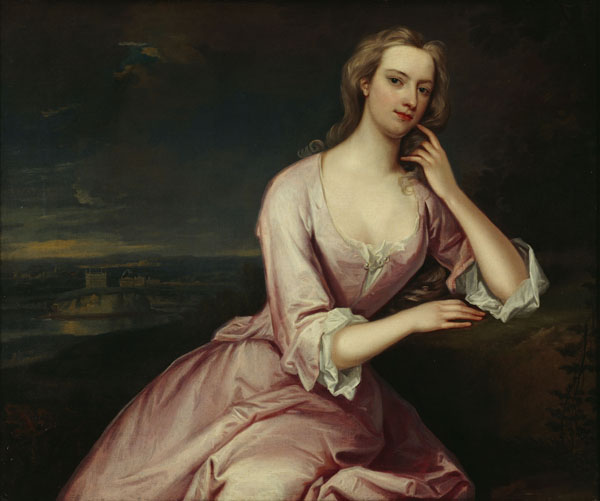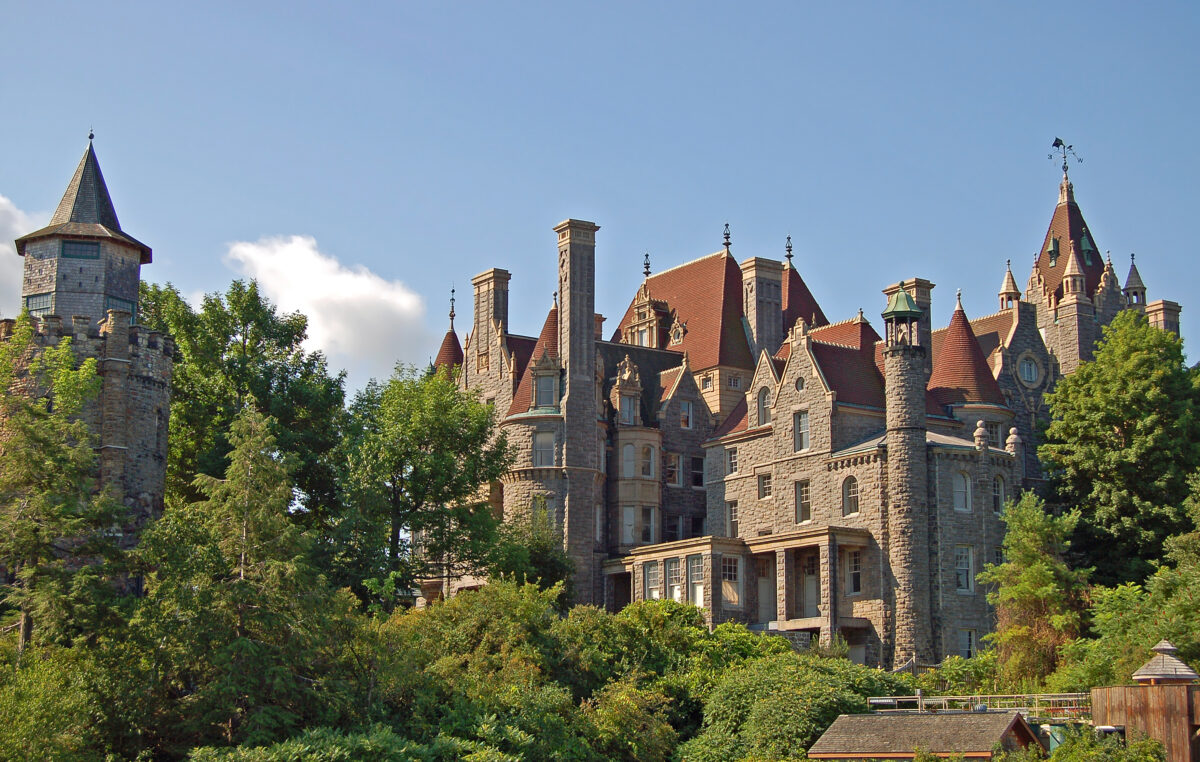With February’s HDB BTO 2023 season upon us and Valentine’s Day on 14 February, we thought it would be apt to share the love stories of 4 different romantic partners whose love for their other halves transcended a simple candlelit dinner and roses on V-Day itself.
Indeed, from Shakespeare’s Romeo and Juliet to that recent tear-jerking episode of Bill and Frank in HBO’s The Last of Us videogame-to-TV series adaptation, nothing is impossible when love is involved.

However, the four individuals in the four stories below may have set the bar a little too high – they’ve each built a house (or constructed “something”) to confess their love for the other – in short, they basically spoilt the market for all lovers out there.
So if you and your partner are planning to apply for an HDB BTO flat, or looking to buy a house, see if these stories inspire you this Valentine’s Day.
At the very least, they make for some interesting conversations over a candlelit dinner…
Ashdown House

The central historical figure behind the love story for this house would be Lord William Craven (1608-1697), an English nobleman, soldier and 1st Earl of Craven.
After inheriting money and lands from his father, a former Lord Mayor of London and an established merchant, he became one of the richest men in 17th-century England.
One of these lands was Ashdown Estate, which William frequented because of his love of hunting.

In his early days, William fought for Frederick V in the Thirty Years’ War but was captured and ransomed. It was at The Hague (Netherlands) that William first met and fell in love with the exiled and older Queen Elizabeth Stuart of Bohemia (1596-1662).
In case you’re wondering, Bohemia today is home to the Czech Republic.
Unfortunately for William, Elizabeth was the daughter of King James I of England, and she was already married to Frederick V. She was also called the ‘Winter Queen’ because her reign lasted only one winter due to the war.
After her husband died in 1632, Elizabeth became senseless with grief and did not eat for three days. According to legend, William stepped in and provided her with care and financial support.
In 1660, when King Charles II (Elizabeth’s nephew) took the throne, William and Elizabeth returned to England. William became her informal head of household and was often seen beside her, including escorting her to the theatre.
While the nature of their relationship was unknown, it became extremely clear how devoted William was to Elizabeth. Because he knew she loved hunting, he chose to build a hunting lodge for her in Ashdown.
Unfortunately, Elizabeth passed away of pneumonia on 13 February 1662 before the house was completed. She did however pass on her documents, trophies and portraits, many of which remain hanging in Ashdown House today.

The House, which one can visit on guided tours, has several unique properties. It has a striking 17th-century staircase made of oak and elm. There’s also the domed cupola which offers spectacular views over three counties, including The Ridgeway, one of the oldest roads in England.
In the vicinity of the House, there’s an ornamental parterre garden, Alfred’s Castle (you’ll know it if you’ve watched Netflix’s The Last Kingdom) and tree trails where you can spot different herds of deer.
The last member of the Craven family left Ashdown in 1926 and it is now under the UK National Trust.
William Craven, however, never married, having lost his one and only love. He died in London on 9 April 1697, aged 88.
Hanging Gardens of Babylon
Alongside the Temple of Artemis and the Pharos lighthouse at Alexandria, the Hanging Gardens of Babylon were one of the Seven Wonders of the Ancient World. If that in itself doesn’t make you step back in awe, then the reasons for it might.
According to ancient texts, the Gardens were supposedly built in the ancient city of Babylon around 600 BC, near today’s Hillah, Babil province in Iraq. The term ‘Hanging Gardens’ refers to overhanging trees, which were planted along raised terrace structures back in the day.
Many who read the texts were amazed by the remarkable feats of engineering it took to construct them. This is because the Gardens (plural) were a series of ascending-tiered gardens beside the Euphrates river – filled with stairways, columns and terraces, and covered with trees, shrubs and vines.

They were built beside the grand palace (known as The Marvel of Mankind) by King Nebuchadnezzar II (605-562 BC), for his wife, Queen Amytis of Media.
According to what was written, she missed the green hills and valleys of her homeland so much, the King decided to build several gardens for her, using the Euphrates river and Archimedes’ screw contraptions to irrigate the plants.
While the exact location of the Gardens was never determined, written descriptions exist. Here’s one:
In this palace he erected very high walls, supported by stone pillars; and by planting what was called a pensile paradise, and replenishing it with all sorts of trees, he rendered the prospect an exact resemblance of a mountainous country. This he did to gratify his queen, because she had been brought up in Media, and was fond of a mountainous situation.
-Josephus (c. 37-100 AD)
Whether the gardens truly exist or not, and for romantic reasons no less, there have been several scholars who shared that the Gardens may have actually been confused with the actual one by the Tigris river, built by King Sennacherib (704-681 BC) of Assyria.
This begs the question – do you need evidence if the story is based on love?
Marble Hill House
If you thought only men built houses out of love in the past, think again.
From 1724 to 1729, Henrietta Howard (1689-1767), the Countess of Suffolk, England, built Marble Hill House, as a retreat away from her former lover – King George II (1683-1760).

Henrietta went through a difficult childhood (she was mainly raised as an orphan since 12) and disastrous first marriage (her husband constantly beat her till she went deaf).
Around 1723, she tried to change her circumstances by orchestrating a way for her husband and herself to be accepted into the future King of England’s court.
She succeeded in being appointed a Lady of the Bedchamber to George II’s wife, Caroline of Ansbach. Lo and behold, George II took a liking to her and made her his royal mistress.
Henrietta and her husband officially separated around 1727, but there was no official divorce, as that would invite public scrutiny, which George II wouldn’t want. Instead, her husband became an Earl, and she was given the title of Countess. In court, Henrietta had to play dual roles as mistress and servant, with great tact and diplomacy.
After her husband’s death in 1733 and George II moving on to a new mistress in 1734, Henrietta remarried – this time to Member of Parliament George Berkeley. As a settlement, she received quite a large gift of stock, jewels, plates, mahogany and furniture from George II.

With her new husband, whom she loved dearly, Henrietta used her wealth to buy lands by the banks of the River Thames and built what is now known as Marble Hill House.
It became a much-needed retreat away from the palace and a chance to start life anew with the love of her life.
The house itself is based on Palladian architecture, inspired by 16th-century Italian architect Palladio.
Henrietta’s tenacity and resourcefulness eventually made her a celebrated patron of the arts, architecture and landscape gardening. She turned Marble Hill House into a magnet for London’s cultural and political elite, including Alexander Pope, John Gay and Horace Walpole.
Some remarked that it rivalled the king’s court back in the day. In 1735, Pope even wrote: “There is a greater court now at Marble-hill than at Kensington, and God knows when it will end”.
Taj Mahal
The love story behind the Taj Mahal requires no introduction. Made of ivory-white marble, the mausoleum – with its resplendent dome and four standing minarets – by the Yamuna river bank in the Indian city of Agra is actually a tomb.

Commissioned by the Mughal emperor Shah Jahan (1628-1658), the Taj Mahal was constructed between 1631-1643 to house his favourite wife, Mumtaz Mahal, after her death on 17 June 1631. It also became his tomb when he died in 1658.
The beautiful complex is 17-hectare in area size and includes a mosque, guest house and gardens within crenellated walls. Records show that the cost to build the Taj Mahal would be around US$1b today.
Officially a UNESCO World Heritage Site, the Taj Mahal has been called the jewel of Muslim art in India and is an admired masterpiece worldwide. As a tourist attraction, the Taj Mahal attracts more than 6 million visitors annually.

But how did Mumtaz become Shah Jahan’s favourite wife, so much so that he would build a breathtaking edifice in her name?
Well, Mumtaz was Shah Jahan’s 2nd wife in marriage. Of the five wives he had, he was so taken with Mumtaz the most that he showed little interest in exercising his polygamous rights with other wives, except to dutifully sire children.
His court historian even wrote: the relationship with his other wives “his whole delight was centred on this illustrious lady [Mumtaz], to such an extent that he did not feel towards the others [i.e. his other wives] one-thousandth part of the affection that he did for her.”

Mumtaz often travelled with Shan Jahan’s entourage and poets would wax lyrical about her beauty, grace and compassion. Her residence was decorated with pure gold, and precious stones and had rose-water fountains. She was given an allowance of one million rupees per year (about USD$13k), besides lands and properties.
More importantly, he consulted Mumtaz in private and political affairs. She was his close confidant and trusted adviser – even to the point of whether to forgive enemies or issue death sentences. As a patron of knowledge, Mumtaz also provided pensions and donations to the daughters of poor scholars, theologians and pious men.
Together, Mumtaz and Shah Jahan had 14 children (eight sons and six daughters).

–
In case you’re wondering, these aren’t the only four examples of architecture or buildings constructed out of love (or heartbreak). A few other noteworthy ones include:
New York’s Boldt Castle: Built on New York’s Heart Island by George C. Boldt, the five-acre castle estate is meant to be given to his wife, Louise, on Valentine’s Day in 1905. It was supposed to have eleven buildings with a luxurious castle, but it was never completed (because George’s wife died and he was left heartbroken).

Toronto’s Casa Loma: Built by Major-General Sir Henry Mill Pellatt in 1911 for his wife. Despite the hefty cost (worth USD65m today), the couple lived in it for only 10 years as they lost their fortune in the depression following World War I. The castle had 98 rooms with an elevator, an oven large enough to cook an ox, secret passageways and three bowling alleys.
Malaysia’s Kellie’s Castle: Not many know this but this is the oldest castle in Malaysia. It was built in Batu Gajah, Malaysia, by plantation owner William Kellie Smith in 1903 for his wife Agnes. Unfortunately, when William brought his wife to the castle, she was not happy there and missed home. Still, William continued to expand the building. When the Spanish flu hit, many construction workers died. To please his Indian workers, he built a Hindu temple near it. Sadly, in 1926, William died of pneumonia when he left for England to buy a crane for the castle tower. The building remains unfinished to this day and is often rumoured to be haunted.

Scotland’s Sweetheart Abbey: This is a 13th-century monument built by a widow as a testimony of her lasting love for her husband. Lady Dervorguilla of Galloway built the red-stoned abbey in memory of her husband, Lord John de Balliol. Visitors passing by the Abbey will see her tomb alongside her husband’s embalmed heart, which she kept in a casket of ivory and silver, and carried with her everywhere when she was alive.
–
Properties for sale near ‘romantic’ places in Singapore
–
What are your plans for Valentine’s Day? Let us know in the comments section below.
If you found this article helpful, 99.co recommends 6 compelling reasons to celebrate this Valentine’s Day at home and Singaporean couple living apart during COVID outbreak gave up BTO flat selection to find a ready home through SBF.
The post Valentine’s Day: 4 lovers who built houses for their significant others (spoiling the market for everyone) appeared first on .
















































































